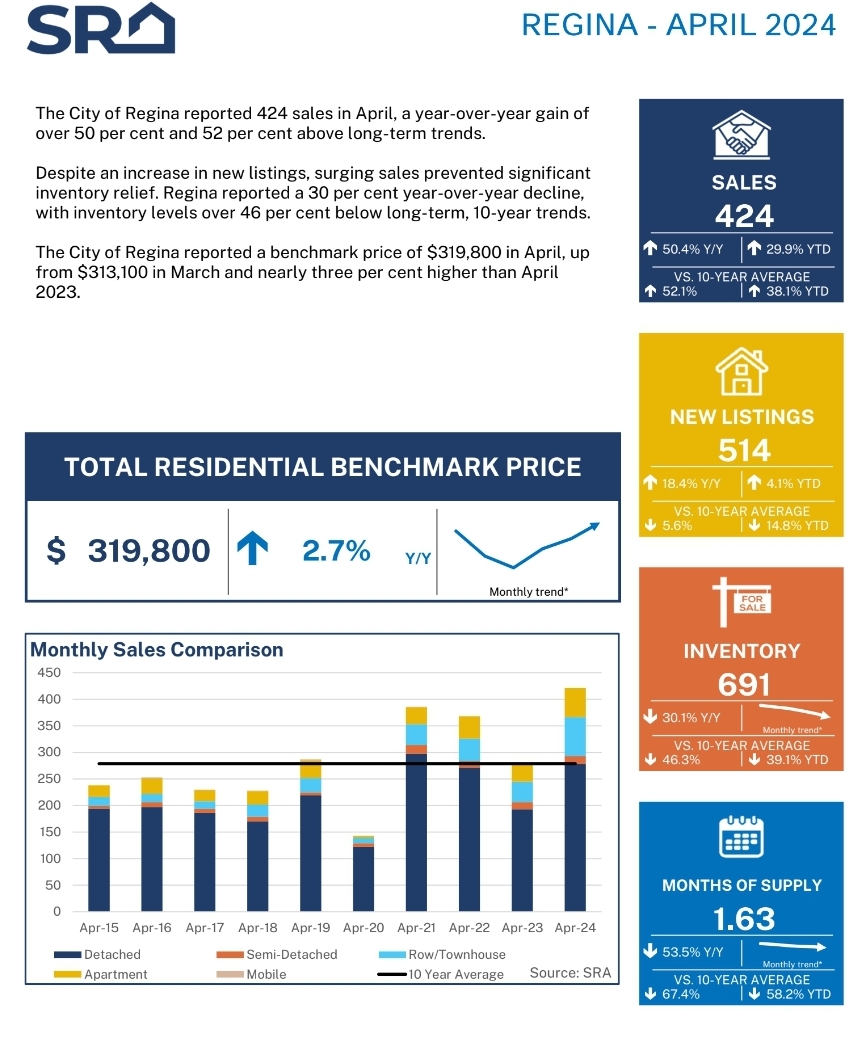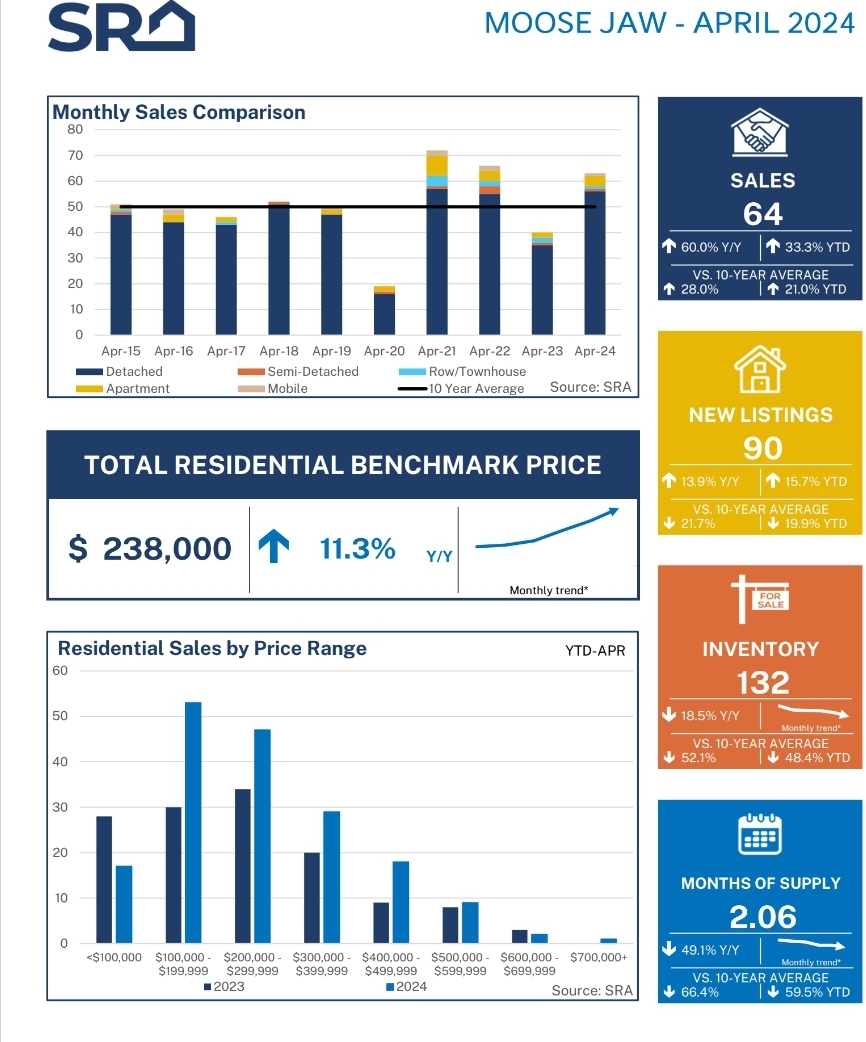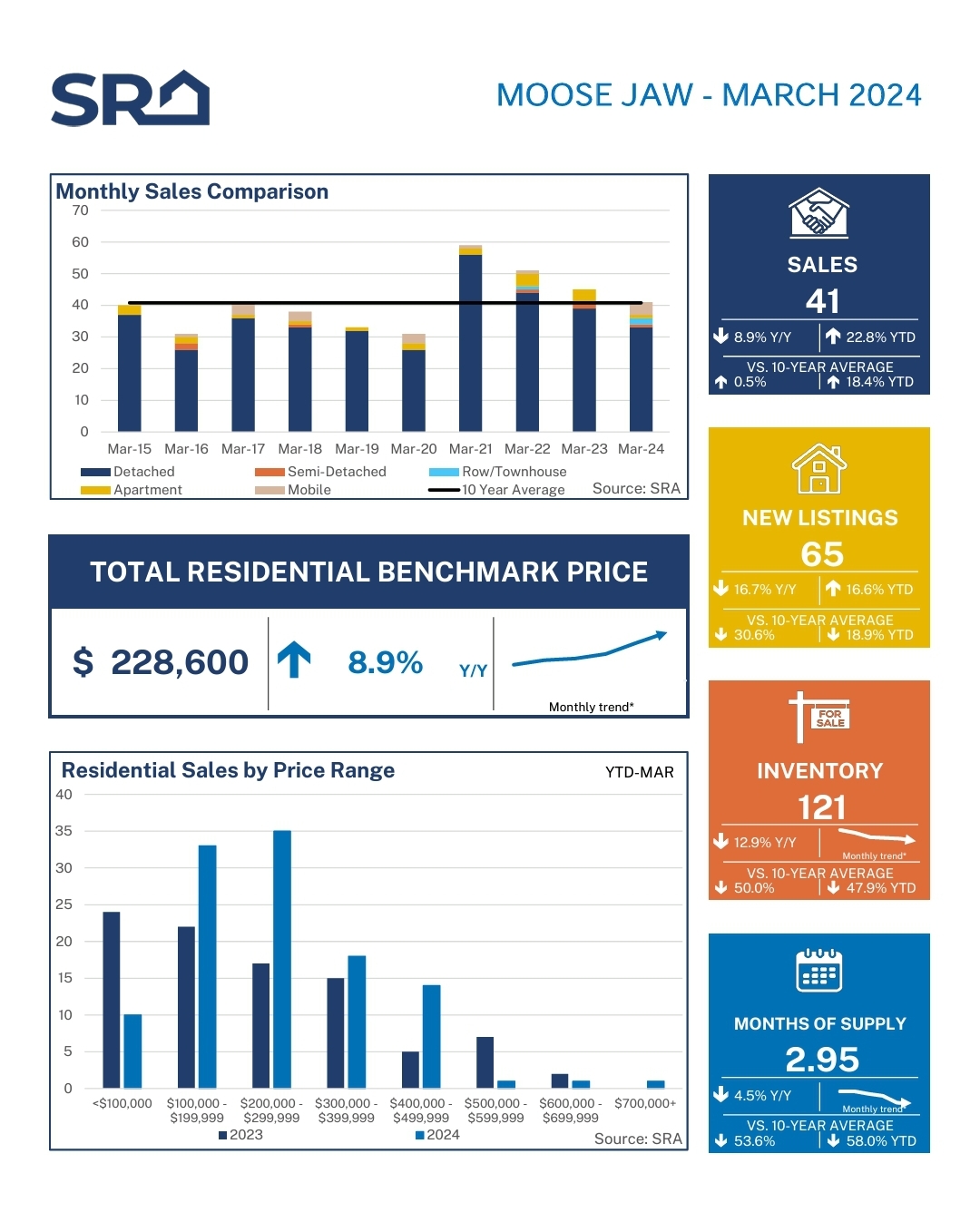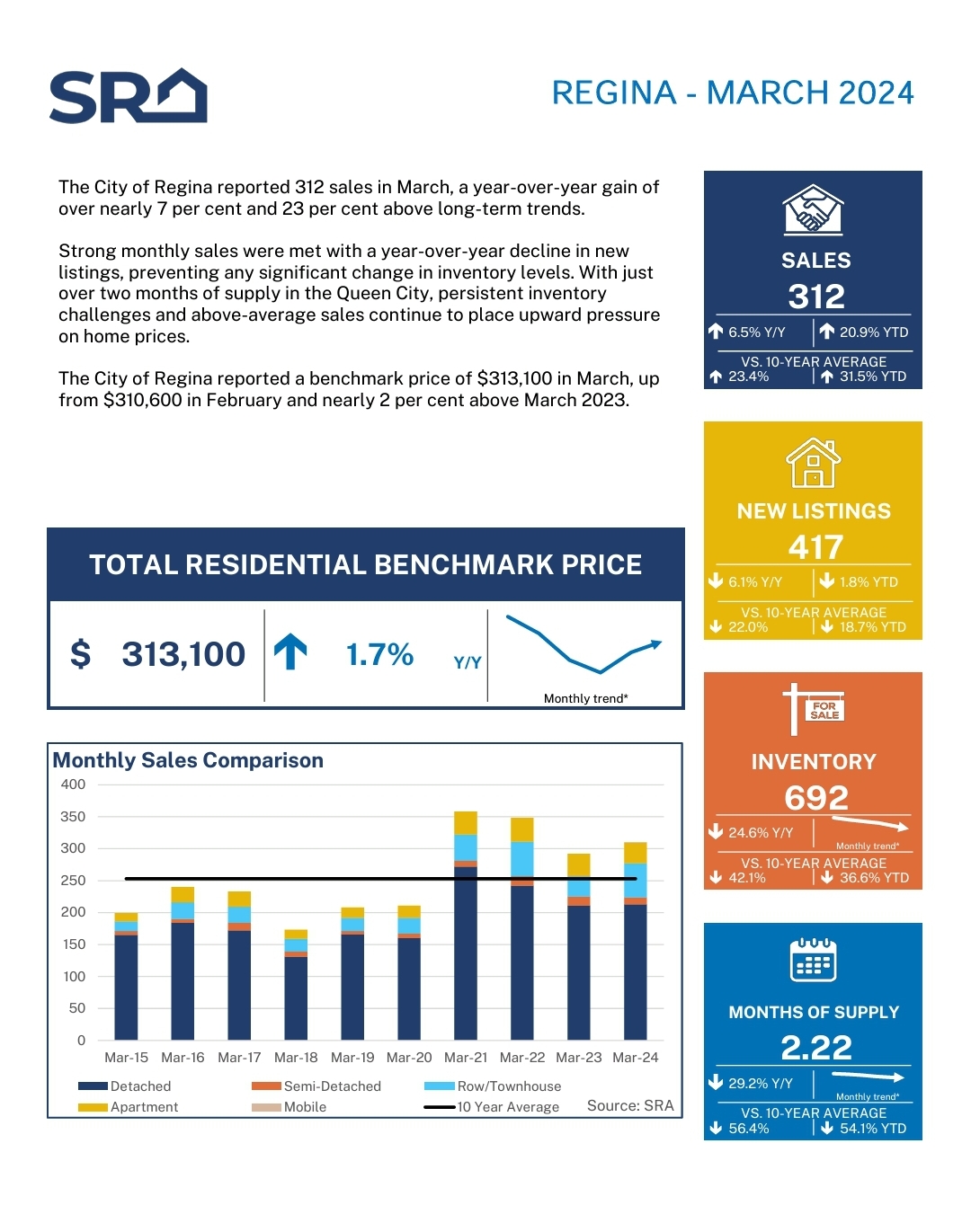May 6, 2024
FOR IMMEDIATE RELEASE:
Saskatchewan reported 1,642 sales in April, up 32 percent year-over-year and compared to long-term, 10-year averages. April marked the fourth consecutive month of above-average sales to open in 2024, resulting in year-to-date sales nearly 17 percent above last year. Sales levels improved across all larger regions of the province, with the most significant gains being reported in the Regina-Moose Mountain and Swift Current-Moose Jaw regions.
Despite a slight uptick in new listings, which supported a modest monthly gain in inventory across the province, inventory levels are down 16 per cent year-over-year and 40 per cent below long-term, 10-year trends. As seen in prior months, the sharpest decline in inventory is reported in products priced below $300,000, with some supply relief in homes priced above $500,000.
“Economic growth, employment gains, and record population numbers continue to support strong housing demand in Saskatchewan, resulting in a tenth consecutive month of above-average sales in April,” said Association CEO, Chris Guérette. “These factors are, without question, boosting housing demand – as evidenced through rising sales in the resale market and falling vacancy rates in the rental market.”
Saskatchewan reported a residential benchmark price of $339,800 in April, up from $334,500 in March and nearly five per cent higher than April 2023. Prices rose across all property types in April, ranging from a five per cent gain in detached and semi-detached property types, to a 13 per cent gain in apartment-style properties.
“With just over three months of supply provincially, our market continues to experience significant supply challenges. However, the conditions are far tighter in Saskatoon and Regina, with both markets reporting under two months of supply in April,” said Guérette. “We’re approaching uncharted territory in our two largest markets right now – it’s an incredibly challenging time for prospective buyers out there. If supply challenges persist, as expected, we will likely see further price gains in these markets.”
City of Regina
The City of Regina reported 424 sales in April, a year-over-year gain of over 50 per cent and 52 per cent above long-term trends.
Despite an increase in new listings, surging sales prevented any significant inventory relief. Regina reported a 30 per cent year-over-year decline, with inventory levels over 46 per cent below long-term, 10-year trends.
The City of Regina reported a benchmark price of $319,800 in April, up from $313,100 in March and nearly three per cent higher than April 2023.




 Facebook
Facebook
 X
X
 Pinterest
Pinterest
 Copy Link
Copy Link



